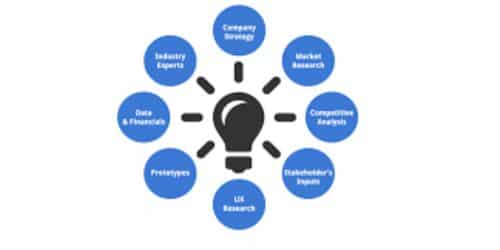Product management refers to the steps experts take to create a product. Product managers, directors, marketers, and developers are just a few of the professions whose skills are needed for this multi-stage process. It’s advantageous for you to learn about the tools that product management experts use if you’re thinking about pursuing a career in this field. In this article, we will be looking into the best product manager management system platform tools.
Sit tight and enjoy the ride!!!
Product Manager Tools
A product manager is a specialist who oversees a product’s growth and ongoing success. They create the vision for each product and share it with the development, sales, and marketing teams at the business. Based on market trends and consumer data, they may also suggest what kinds of products the company they work for should buy from outside vendors to offer to clients. Their main objectives are to supervise the creation of new items and boost the profitability of already existing ones.
What Does a Product Manager Do?
There are a few main responsibilities you can anticipate being in charge of in this capacity, even if the specific job duties a product manager performs may vary depending on the industry they work in, the size of the organization they work for, and the types of goods they oversee. For instance, one of my main responsibilities as president of product management and operations at DDC Consulting is to purchase all of the company’s items for sale while also keeping inventories. Other typical duties carried out by product managers include:
- Looking into market trends
- Acquiring knowledge of rivals and their products
- Directing the creation of new items to guarantee they satisfy consumer demands and requirements
- Reviewing and assessing the needs and parameters for each product
- Future potential for new product lines can be found by doing market research
- Evaluating the price of a product in relation to similar goods offered by competitors
- Ensuring efficient communication between the sales, marketing, and research & development teams
- Forecasting future and present sales of products
- Defining each product’s long-term vision and objectives
- Presenting product development approaches to influential stakeholders and business executives
- Monitoring important performance metrics and examining sales figures
What are Product Manager Tools?
Professionals use a variety of materials to help them understand the product management process and strategy. A product’s life cycle, which includes creation, planning, production, pricing, marketing, and ultimate product launch, is managed by the organizational function of product management inside a firm. In order to make sure that a product is valuable to the target audience, a product manager works to create products that are superior or distinctive from the business’s current offers.
Best Product Manager Tools
Below is the list of some best product manager tools:
#1. Google Sheets
The majority of blogs will tell you that spreadsheets are the worst, yet the best product managers don’t hesitate to work with unprocessed data. Because of this, spreadsheets are at the top of our list. Although they are unsightly, they are effective in processing data and generating insights that help with product decisions. Google Sheets will be utilized by the top product managers at least once throughout the planning phase. Spreadsheets do have several shortcomings. They are useless for stakeholder presentations, and they make collaboration a real pain. However, we continue to support Sheets because it doesn’t require any onboarding for a seasoned PM, requires no licensing, is simple to access, and is simple to use for a seasoned product lead.
#2. Notion
When you in into Notion, you’ll see that the left-hand panel that divides subjects into subcategories has some Confluence-like features. Notion allows you to:
- For material such as product analyses, feature documents, and roadmaps, establish a product wiki.
- Keep track of the product roadmap.
- Assemble meeting minutes
- Set up sprints
- Create Kanban boards.
- Establish project plans.
PMs may also use Notion to organize their personal lives, which can undoubtedly be impacted by busy work because it is so adaptable. The notion makes it simple to transition between your team and individual accounts.
#3. Miro
If you are used to using a whiteboard for product management, try a virtual one. Miro is a fantastic visual collaboration tool. You must learn how to utilize a whiteboard for group brainstorming before using Miro if you don’t already know how. The most seasoned product leads are aware of which visual frameworks work best to handle the issue at hand. One of the best solutions for remote team collaboration is Miro. A lot of design and product teams hold a special place in their hearts for Miro because it helped save a project during a last-minute remote work order in March 2020.
#4. Figma
The simple prototyping tool’s comment function, which enables teams to give comments concurrently on the same version, is its best-known feature. On Figma, web files may be effortlessly shared with just one link. Collaboration is just as simple as using a Google Doc. Figma’s main selling point is its ability to create and test low- to high-fidelity prototypes before the UX team begins working on the final product. Because all of the design files are in one location, their design system tools eliminate the requirement for version control.
#5. Paper and a Pen
Pen and paper might be helpful for making quick notes or writing down ideas when you get an idea. Furthermore, drawing a diagram on paper can help you explain your idea more effectively than verbally when working with stakeholders that are more visually literate. The most effective product managers must have timing and time management skills. PMs frequently overinvest time in innovation, although saving time is the most important resource for startups.
Product Management System
System for product management is thus used to produce and enhance software products for businesses fast and effectively. These tools also make it possible for a product manager and his teams to gather fresh concepts and user feedback, evaluate the effectiveness of their products, and carry out particular strategies to develop and enhance their offerings. Although these tools are typically utilized by a product manager and product teams, they also give other departments, such as marketing and sales, additional transparency and insight into product development. The product management system includes:
#1. Pivotal Tracker
Pivotal Tracker is a solution for product management and planning that was created specifically for contemporary software development teams. Over ten years, Tracker has also been honed and adjusted to provide just the right amount of structure to promote team communication and cooperation. Tracker enables an agile workflow. The entire thus team has easy access to project status, workflow, communications, and documents in one location, allowing product owners to stay informed and developers to prioritize their efforts.
#2. Gainsight PX
Product teams may also build goods for people with the aid of Gainsight PX. By fusing the strength of thorough product analytics, user engagements, and feedback into a single solution, the Gainsight PX product experience platform enables B2B firms to increase adoption, engagement, and product-led growth. Learn about the first platform that combines content, analytics, interaction, and feedback in one location. First, product teams may learn, therefore, everything there is to know about their users and how their products are being used with the aid of product analytics and insights.
#3. Flock
A collaboration and communication tool for contemporary teams and enterprises is called Flock. Teams are empowered by Flock because of the abundance of built-in productivity tools it offers, like shared notes, reminders, to-do lists, and surveys. Users can hold audio and video calls with distant teams. Teams may communicate and share knowledge more effectively when screens are shared. Google Drive is thus well connected with Flock as well. You may quickly transition between teams, conversations, apps, and much more with the help of Flock. A more integrated experience is made possible by the smooth integration of Flock Apps with the core product.
#4. Shortcut
The shortcut is the first project management tool for the system that works with each team to create better products. It is intended to foster more productive and healthy cross-organizational collaboration so teams can concentrate on what matters—creating goods that customers will love. Shortcut offers a web application, an easy API, and a wide range of connectors.
#5. Airfocus
The first and only modular product management platform system on the market, Airfocus is designed exclusively for product teams to utilize for internal product management, market-facing products, and IT portfolio management. The adaptable platform assists product teams in managing strategy, comprehending consumer needs, prioritizing, and bringing their teams together around well-defined roadmaps. Join the countless product teams using Airfocus to improve their decision-making and create world-class products.
#6. ProdPad
The first full-cycle product management system, ProdPad serves the whole product lifecycle. a dynamic, intelligent toolbox that promotes cross-business cooperation and integrates with product development processes at every stage. This SaaS, which has been under continuous development since 2012, was created by a team of specialists to help other PMs put best-practice product management into practice. Product managers can transform amazing ideas into fantastic products that customers adore thanks to ProdPad.
Product Management Platform
The product management platform can include:
#1. Monday.com
Teams of all sizes may plan, track, and manage their daily tasks using the online product management platform monday.com. From weekly iterations to broad product roadmaps, Monday.com assists teams in defining clear ownership, tracking and analyzing their work, managing sprints, and collaborating. Teams can collaborate online with ease thanks to the agile platform from Monday.com. The Work OS from Monday.com is composed of visual and adaptable components that work together to provide any agile workflow your team needs. It offers task dependencies, milestones, Gantt and Kanban views, and project analysis.
#2. Craft.io
A platform for end-to-end product management with best practices integrated is Craft.io. Product managers can use it to manage every aspect of the lifecycle of their digital products, from feature definition and feedback gathering to prioritization, capacity planning, road mapping, and portfolio management. With the use of this technology, product teams can establish a single source of truth where they can manipulate their data in order to produce customized roadmaps that are constantly up-to-date, seamlessly tie strategy to features, and tell enthralling product stories.
#3. Airfocus
The first and only modular product management platform on the market, Airfocus is designed exclusively for product teams to manage internal products, external goods, IT portfolios, and more. The adaptable platform assists product teams in managing strategy, comprehending consumer needs, prioritizing, and bringing their teams together around well-defined roadmaps. Users of Airfocus may easily create their roadmaps using the user-friendly drag-and-drop interface and the collection of completely customizable templates based on tried-and-true product management and roadmapping techniques.
#4. ProductPlan
Using their straightforward drag-and-drop editor, ProductPlan enables team collaboration on live roadmaps. You can also alter how your timelines, lists, tables, and portfolio layouts look. You may provide links to editable roadmaps to your stakeholders using ProductPlan, which makes it simple for them to examine your data without having to pay for the tool’s use.
#5. Productboard
Productboard is a system for managing products that are used by companies like Microsoft and Zendesk. It assists your team in determining the needs of your target audience, prioritizing which features to develop (and when), and bringing everyone together around your product roadmap.
To determine which features are more popular with clients, you can utilize Productboard to gather user feedback on proposed features. Happy customers are those who have the characteristics they desire, and Productboard can assist you in gathering input regarding the features that customers desire for your products. You can utilize Productboard’s consumer data to prioritize features that will improve customer happiness.
#6. Dragonboat
For teams who prioritize results, Dragonboat is a comprehensive and user-friendly platform for managing product portfolios. Dragonboat provides integrated product planning, resource forecasting, automated tracking, and dynamic stakeholder reporting by connecting OKRs, customer feedback, and roadmaps. Product managers may prioritize features, consolidate feedback and requests, and create with Dragonboat. Stakeholders who have permission-controlled roles like Reader or Editor can follow along. You can allocate resources in Dragonboat to initiatives, objectives, and key results (OKRs). To make sure you are making the most use of your team’s time, you may monitor the direct ROI of new product features and upgrades.
What Is Product Management Tool?
Teams can manage specific stages of the product life cycle with the aid of product management technologies. Planning a product launch is one such activity. project management for software development. Merchandise analysis
Do Product Managers Need to Code?
Nobody anticipates you as a product manager to write all of the product’s code from scratch. You ought to be able to decipher the meaning behind developers’ lingo, nevertheless.
What Are the Three Pillars of Product Managers?
The Three Pillars of Product Management are what?
- Product discovery.
- Product planning.
- Product development.
What Is Jira in Product Management?
Atlassian created Jira as an issue-tracking solution for software development teams to keep track of stories, epics, bugs, and other activities.
What Is CRM in Product Management?
A tool known as customer relationship management (CRM) is used to handle all interactions and relationships between your business and its clients.
What Are the 5 Core Competencies of a Product Manager?
The top 5 abilities needed for a product manager are analytical skills, technical skills, research skills, communication skills, and leadership skills.
Related Posts
- COLLABORATION PLATFORMS: Best Collaboration Tools & Software in 2023
- BUSINESS COLLABORATION: Types, Benefits, and Examples (+Free & Paid Software Options)
- Best Product Management Software and Tools In 2023
- FREE OKR SOFTWARE: 47+ Best Free OKR Software in 2023 (+ Free Tips )






